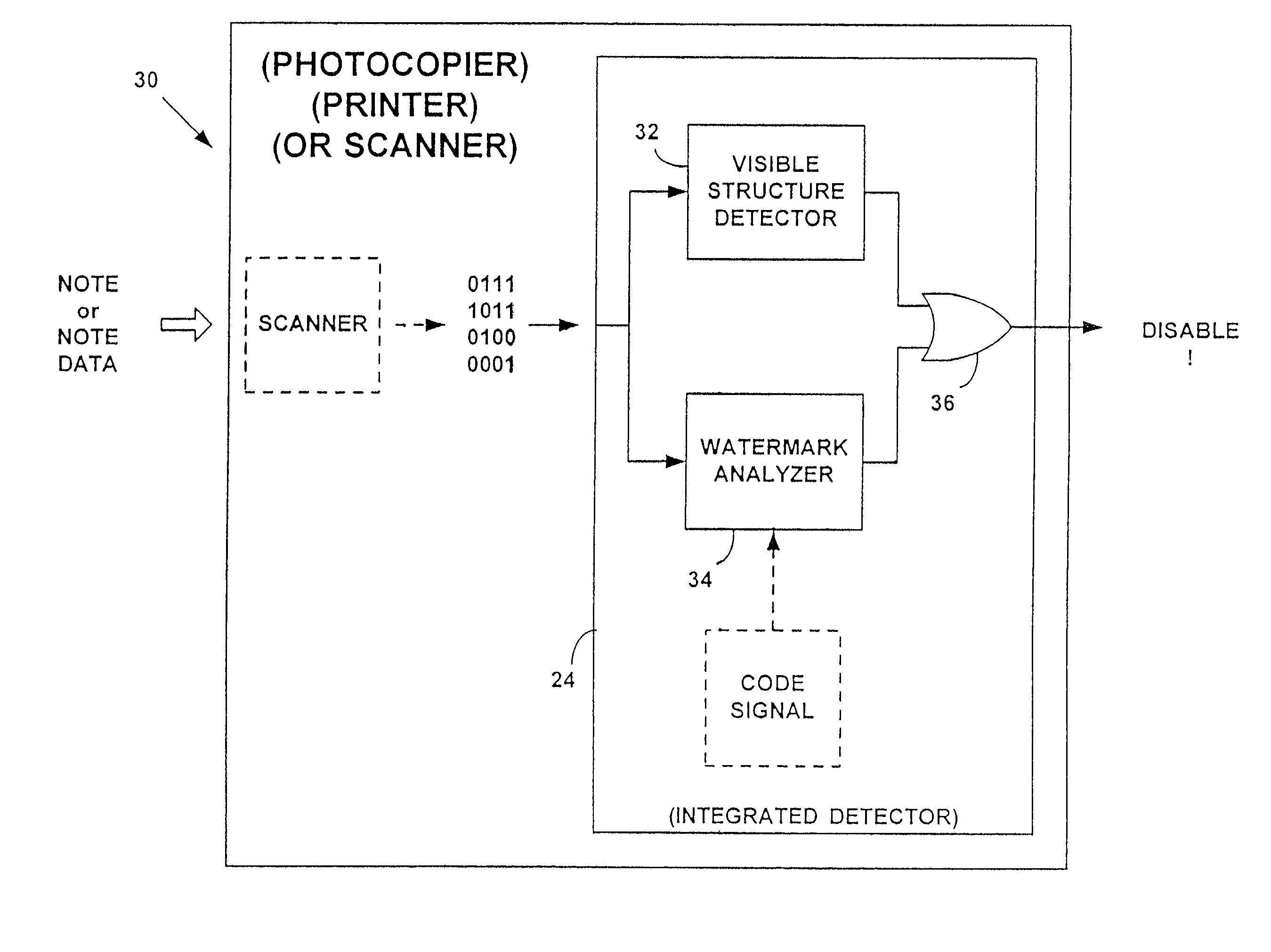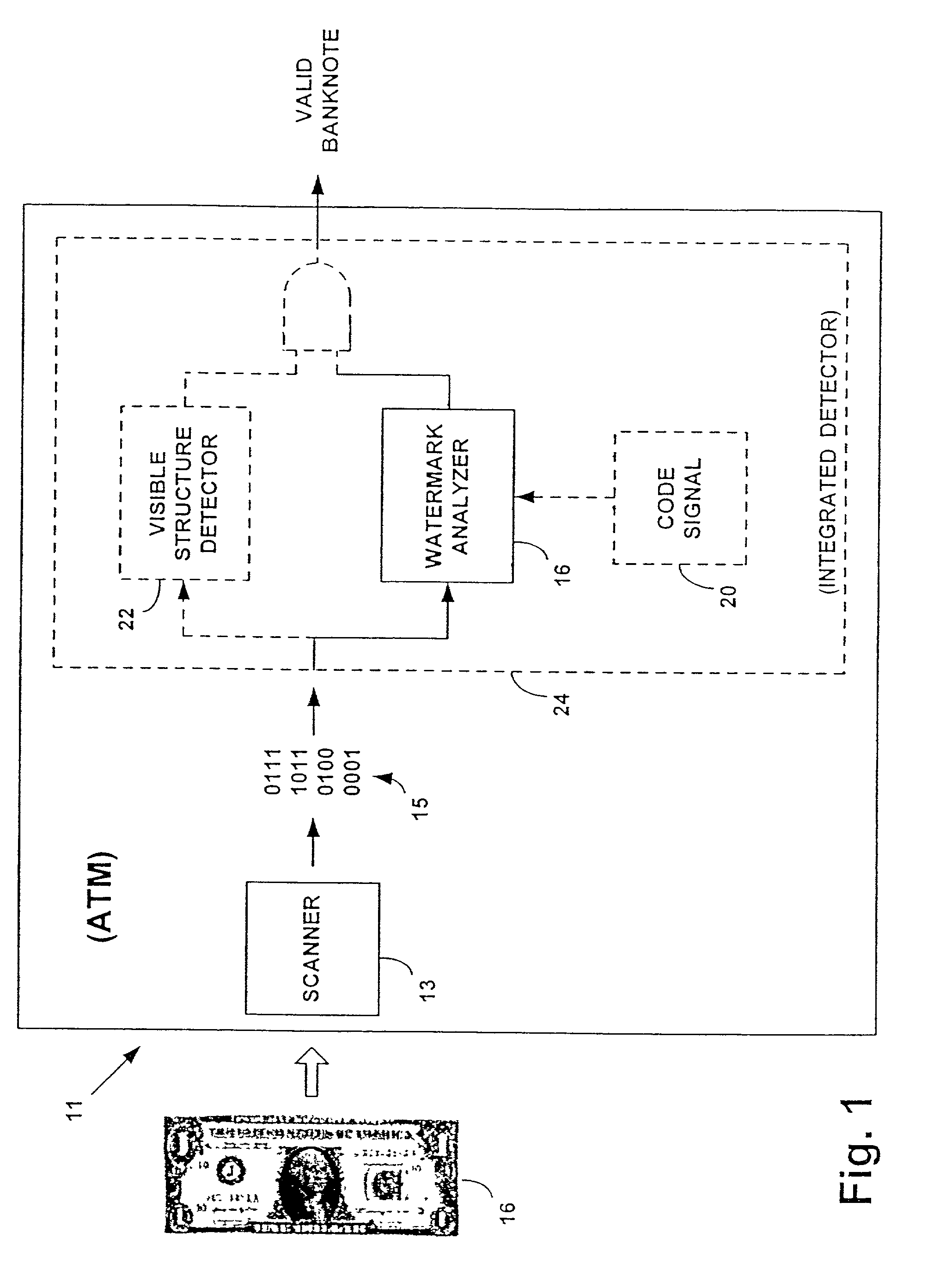Inferring object status based on detected watermark data
- Summary
- Abstract
- Description
- Claims
- Application Information
AI Technical Summary
Benefits of technology
Problems solved by technology
Method used
Image
Examples
Embodiment Construction
[0019]Watermarks in banknotes and other security documents (passports, stock certificates, checks, etc.—all collectively referred to as banknotes herein) offer great promise to reduce such counterfeiting, as discussed more fully below. Additionally, watermarks provide a high-confidence technique for banknote authentication.
[0020]By way of example, consider an automatic teller machine that uses watermark data to provide high confidence authentication of banknotes, permitting it to accept—as well as dispense—cash. Referring to FIG. 1, such a machine (11) is provided with a known optical scanner (13) to produce digital data (15) corresponding to the face(s) of the bill (16). This image set (14) is then analyzed (16) to extract embedded watermark data. In watermarking technologies that require knowledge of a code signal (20) for decoding (e.g. noise modulation signal, crypto key, spreading signal, etc.), a bill may be watermarked in accordance with several such codes. Some of these code...
PUM
| Property | Measurement | Unit |
|---|---|---|
| Color | aaaaa | aaaaa |
Abstract
Description
Claims
Application Information
 Login to View More
Login to View More - R&D
- Intellectual Property
- Life Sciences
- Materials
- Tech Scout
- Unparalleled Data Quality
- Higher Quality Content
- 60% Fewer Hallucinations
Browse by: Latest US Patents, China's latest patents, Technical Efficacy Thesaurus, Application Domain, Technology Topic, Popular Technical Reports.
© 2025 PatSnap. All rights reserved.Legal|Privacy policy|Modern Slavery Act Transparency Statement|Sitemap|About US| Contact US: help@patsnap.com



